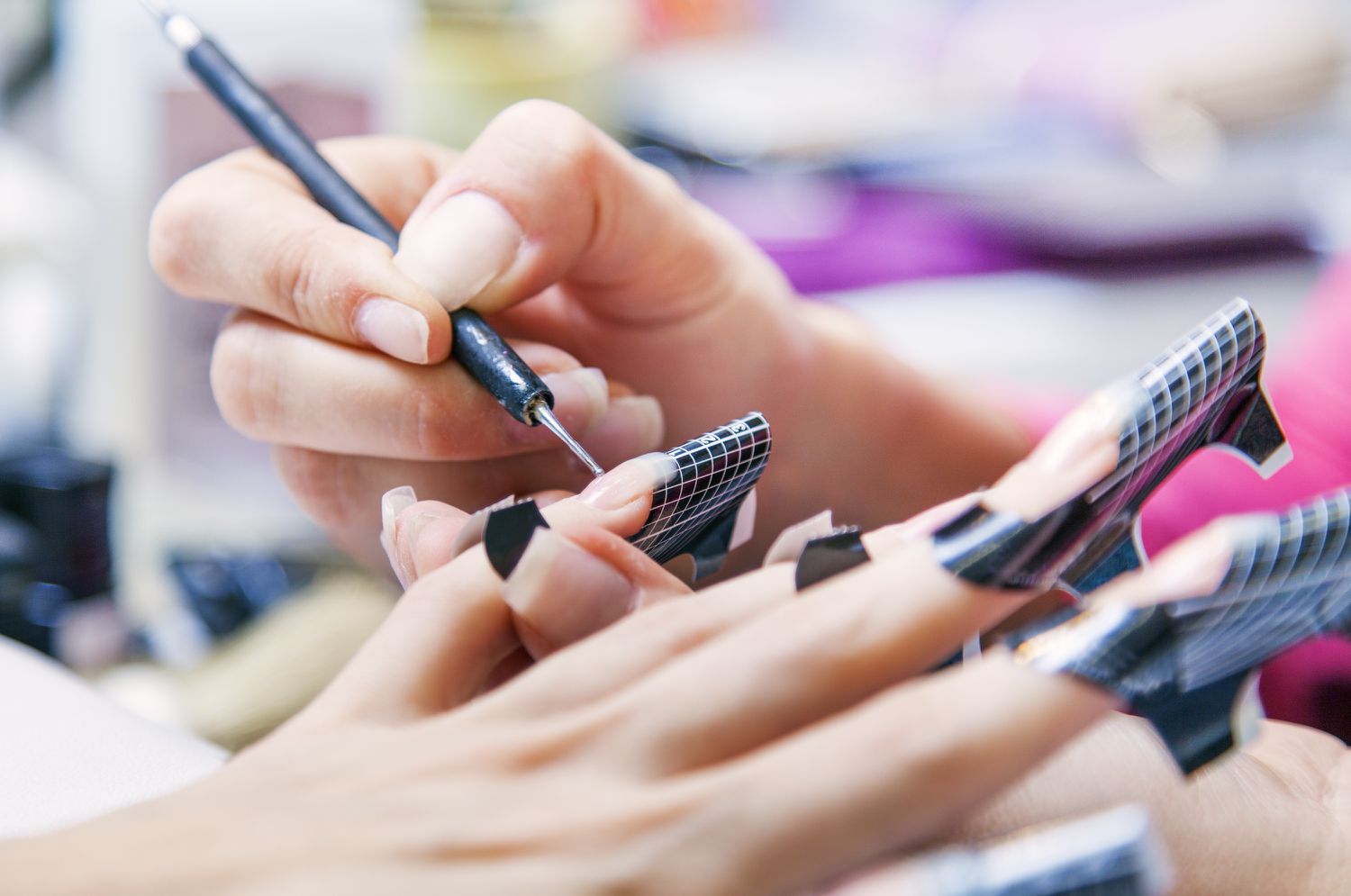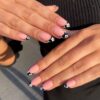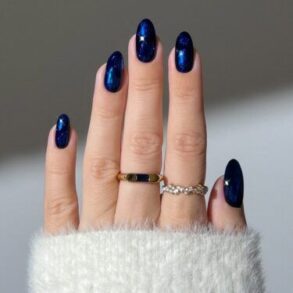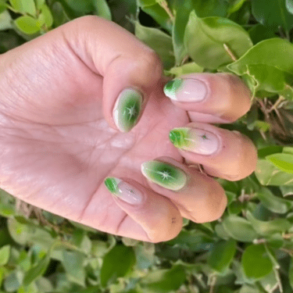
Long before gels, dips, and socially acceptable press-ons gained popularity, acrylic nails were truly a staple of the times. Typically associated with thick French tips or dainty flower designs, the OG of “fake nails” has come a long way. Now seen in an array of colors and designs all over TikTok, acrylics have evolved into a manicure staple for anyone who wants long nails but can’t maintain their ideal nail length or shape on their own. Whether you want a your-nails-but-better look or all-out claws, we asked experts everything you need to know before getting acrylic nails for yourself.
- Jan Arnold is co-founder and style director of CND, a nail care company.
- Dylana Do is a licensed independent nail technician specializing in natural nail care.
- Shel Pink is the founder of SpaRitual, a vegan beauty brand.
- Hilary Dawn Herrera is a nail artist and educator.
What Are Acrylic Nails?
If you’re new to the world of artificial nails, you might not even use the word “acrylics;” according to CND co-founder Jan Arnold, it’s an “old-fashioned” term for what’s presently called “nail enhancements.” The formula is a mix of powder and liquid monomer that’s combined into a clear dough, shaped onto your nails with a brush, and air-dried.
“This is a two-step monomer and polymer liquid and powder system that elongates and adds shape for nails needing enhancement,” Arnold explains. “Just like hair color, they require bi or tri-weekly rebalancing to maintain their strength and beauty as nails grow. They serve as a great base for color, art, and embellishment.”
Acrylic nails are ideal if your nails need a strong protective shell. “They’re great for nail biters or people who are rough on their nails because they provide a hard surface that’s difficult to bite through or chip when done correctly,” says nail technician Dylana Do. “They’re also incredibly versatile and can be used for nail art, sculpting extreme lengths, experimenting with shapes, covering broken nails, and accommodating a wide range of styles.”
How Are Acrylic Nails Applied?
Before applying acrylic nails, your nail tech will prep your natural nails by removing old nail polish and trimming and buffing the nails. A primer is then applied before nail tips are glued to each finger using acrylic nail glue. The new “fake” nail is then clipped and filed to your desired length and shape.
A brush is then dipped into liquid acrylic and acrylic powder (respectively) and used to apply the mixture to your nails, which is flattened and brushed to shape the nail. They’re then filed once again to your preferred shape and length. To finalize the acrylic nails, the set acrylic mixture is buffed before they’re painted.
How Long Do Acrylic Nails Last?
Acrylic nails require maintenance every two to three weeks to get them filled. This keeps your nails looking fresh and accounts for the new growth of your natural nails. As long as any lifting of the acrylic is filled in, a set can be worn for up to six to eight weeks before it needs to be removed and a new set is applied.
What Is the Difference Between Acrylic Nails and Dip Nails?
Acrylic nails are often confused with dip nails since they both require powder application. “They’re actually the same product, just applied in different ways,” Do explains.
“Dip powder is a more finely milled acrylic powder that typically involves dipping (hence the name) the nail in powder, which will attach to a resin-based glue that was applied on the nail. Acrylics are created with a liquid monomer and don’t require resin. Both nail enhancements can be used to lengthen your nails, but dip powder requires tips to do so, while acrylics can provide length with tips or by being sculpted on top of nail forms,” Do adds.
Dip nails are stronger than acrylic nails, and therefore typically last longer (up to four weeks). But Do recommends acrylics to people who want nail art, extreme lengths, or experimental shapes.
What Is the Difference Between Acrylic Nails and Gel Nails?
While acrylic nails use an air-dried liquid and powder mixture to fortify the nail, gel nails use a gel polymer that is cured under LED or UV light. Acrylic nails give your natural nails a stronger layer and work great for adding length. Gel nails on the other hand look and feel more natural than acrylic nails. However, gel nails aren’t as durable as acrylic nails, lasting two to three weeks before they should be removed.
Are Acrylic Nails Damaging?
Depending on how they’re applied and maintained, plus how long they’re kept on, acrylic nails can damage your natural nails. “If not done well, acrylic nails can harbor bacteria and cause fungus,” says SpaRitual founder Shel Pink. “They can also deteriorate the health of the nail over time and compromise the integrity of the nail plate if left on too long. This weakens and dehydrates the nail, causing splitting and cracking.”
Some studies also show certain chemicals in acrylic nails (mainly EMA) can cause breathing problems for nail technicians and customers who are often exposed to it during the application process, although this would take a lot of exposure to have an effect. While not as common, there are also cases of people reacting to the acrylates from acrylics. “This can result in a severe rash, your nail detaching from the nail bed, intense itchiness, redness around the fingers, and flaking of the skin,” Do explains.
Do goes on to say that for several reasons, it’s important that people only go to a trusted licensed professional for acrylic nails. “Do not do acrylics at home because it requires great skill to handle the product safely and correctly,” Do warns.
How to Remove Acrylic Nails
Although you may be tempted to rip them off (especially when one already bites the dust), Do says that’s the ultimate nail sin and recommends leaving the process of removing artificial nails to professionals.
“Acrylics should be removed by soaking the nails in acetone, or taking an acetone-soaked cotton ball and wrapping the nails in tin foil to soak them,” Do says. “The process can be sped up by e-filing (drilling) a majority of the acrylic off before soaking them in acetone, but this process shouldn’t hurt and shouldn’t be rushed. Acrylics should never be removed by slipping a card or nail tip underneath the product and ripping them off, as this is extremely damaging and painful.”
How to Care for Nails After Acrylic Removal
It’s important to nourish and care for your natural nails after removing acrylic nails. “Using moisturizing products designed for the hands and nails can be key to your nails holding up well,” says nail artist Hilary Dawn Herrera. “Be sure to use ingredient-conscious products.”
Pink is a big proponent of cuticle oil application twice a day and recommends SpaRitual Cuti-Cocktail Vegan Nail & Cuticle Oil. Pink also advises using a nourishing nail strengthener as a 14-day treatment, such as SpaRitual Nourish Nail Vegan Strengthener.
This post was originally published on this site be sure to check out more of their content.







